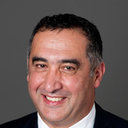Structural brain correlates of alcohol and cannabis use in recreational users.
Atslēgvārdi
Abstrakts
BACKGROUND
Previous studies on substance-dependent populations have shown that age of first use and duration of use are associated with alterations in regional brain volumes. However, it is not clear whether such alterations are factors that predispose young people to use, and so are also present in recreational users, or are a consequence of chronic exposure to substances and/or comorbid psychopathology.
OBJECTIVE
To investigate relationships between key brain structures and parameters of alcohol and cannabis use, in otherwise healthy male recreational users.
METHODS
High-resolution magnetic resonance imaging was used to measure hippocampal, amygdala, whole-brain and intracranial cavity (ICC) volumes in 22 young men with a history of both alcohol and cannabis use.
RESULTS
Linear regression analyses with hippocampal, amygdala and whole-brain volumes as the dependent variables and age and ICC as covariates were performed. Findings showed that use of cannabis and alcohol at an earlier age were independently predictive of larger amygdala volumes, whereas longer duration of cannabis use was predictive of smaller hippocampal volumes.
CONCLUSIONS
Our findings offer preliminary support for a relationship between patterns of substance use and regional brain volumes in recreational users. It is speculative, but possible that this relationship is an evidence of a neurobiological vulnerability to drug-taking behaviour.




